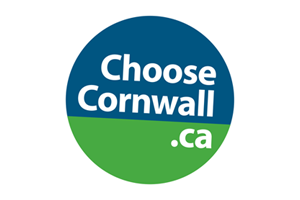Cornwall Ontario – The Stay at Home order that restricts movements to essential needs has been extended until February 16 for Cornwall and the area governed by the Eastern Ontario Health Unit.
The Ontario government is moving to a regional approach and maintaining the shutdown in the majority of the public health regions in Ontario, including the Stay-at-Home order and all existing public health and workplace safety measures. When it is safe to do so, the province will gradually transition each region from the shutdown measures to a revised and strengthened Framework.
“Our number one priority will always be protecting the health and safety of all individuals, families and workers across the province,” said Premier Doug Ford. “But we must also consider the severe impact COVID-19 is having on our businesses. That’s why we have been listening to business owners, and we are strengthening and adjusting the Framework to allow more businesses to safely reopen and get people back to work.”
To support the province’s economic recovery, the government has updated the COVID-19 Response Framework: Keeping Ontario Safe and Open to allow for a safer approach to retail. Limited in-person shopping in Grey-Lockdown zones will be permitted with public health and safety measures, such as limiting capacity to 25 per cent in most retail settings. In addition, public health and safety measures in retail settings will be strengthened for other levels of the Framework. Individuals will also be required to wear a face covering and maintain physical distance when indoors in a business, with limited exceptions.
Other measures include a requirement for individuals to wear a face covering when attending an organized public event or gathering (where permitted) if they are within two metres distance of another individual who is not part of their household (both indoor and outdoor). All other requirements for gatherings and organized public events would be maintained.
Based on the improving local trends of key indicators, including lower transmission of COVID-19, improving hospital capacity, and available public health capacity to conduct rapid case and contact management, the following three regions will be moving back to the Framework at the Green-Prevent level on Wednesday, February 10, 2021 at 12:01 a.m. and will no longer be subject to the Stay-at-Home order:
- Hastings Prince Edward Public Health;
- Kingston, Frontenac and Lennox & Addington Public Health; and
- Renfrew County and District Health Unit.
Due to the fact that public health trends are improving in some regions faster than others, the current Stay-at-Home order will be amended and individual orders making it applicable to each public health region will be made except for the three above. It is proposed that the Stay-at-Home order will continue to apply to 28 public health regions until Tuesday, February 16, 2021. For Toronto, Peel and York regions, it is proposed that the Stay-at-Home order will continue to apply until Monday, February 22, 2021. Final decisions will be subject to review of the trends in public health indicators at that time.
“While we have seen some progress in our fight against COVID-19, the situation in our hospitals remains precarious and the new variants pose a considerable threat to all of us,” said Christine Elliott, Deputy Premier and Minister of Health,. “As we cautiously and gradually transition out of the provincewide shutdown, we have developed an emergency brake system giving us the flexibility to contain community spread quickly in a specific region, providing an extra layer of protection.”
Recognizing the risk posed by new variants to the province’s pandemic response, Ontario is introducing an “emergency brake” to allow for immediate action if a public health unit region experiences rapid acceleration in COVID-19 transmission or if its health care system risks becoming overwhelmed. If this occurs, the Chief Medical Officer of Health, in consultation with the local medical officer of health, may advise immediately moving a region into Grey-Lockdown to interrupt transmission.
“While we are seeing our numbers trend in the right direction, our situation remains precarious as the variants of concern remain a serious risk,” said Dr. David Williams, Chief Medical Officer of Health. “This is not a re-opening or a ‘return to normal’ and we must continue to limit close contact to our immediate households and stay at home except for essential reasons. By continuing to follow all public health and workplace safety measures, we can continue to reduce the number of new cases and the strain on our health system.”
In addition, the provincial emergency will be allowed to terminate at the end of February 9, 2021. While the provincewide Stay-at-Home order will cease to apply in some regions as of February 10, 2021, everyone is strongly advised to continue to stay at home, avoid social gatherings, minimize travel between areas with different rules, and limit close contacts to their household. Employers in all industries should continue to make every effort to allow employees to work from home.
Enforcement of residential evictions will remain paused in the public health unit regions where the provincial Stay-at-Home order remains in effect. This will ensure people are not forced to leave their homes. In regions where the Stay-at-Home order is lifted, the regular process for residential eviction enforcement will resume.
Orders currently in force under the EMCPA have been extended to February 23, 2021 and will be extended further if necessary. O.Reg.55/21 (Compliance Orders for Retirement Homes) is currently in effect until February 19, 2021.
“While the declaration of emergency will be ending, the risks posed by COVID-19 and the new variants remain serious concerns,” said Solicitor General Sylvia Jones. “That’s why extending the stay-at-home orders for most of the province is necessary to protect our communities, our most vulnerable populations, and stop the spread of COVID-19. We continue to urge all Ontarians to follow public health guidelines and stay home, stay safe, and save lives.”
The Chief Medical Officer of Health will continue to consult with public health and other experts, review data, and provide advice to the government on the appropriate and effective measures that are needed to protect the health of Ontarians. Municipalities and local medical officers of health may have additional restrictions or targeted requirements in their region.
Quick Facts
- Provincewide Shutdown measures went into effect on December 26, 2020 to stop the rapid spread of COVID-19 across the province.
- The government declared its second provincial emergency on January 12, 2021 and issued a Stay-at-Home order to reduce mobility and address hospital capacity concerns.
- Ontario has implemented a six-point plan to deal with the new variants which includes mandatory on-arrival testing of international travellers, enhanced screening and sequencing, maintaining public health measures to keep people safe, strengthening case and contact management to track the spread of new cases, enhanced protections for vulnerable populations, and leveraging the latest data to inform public health decisions.
- In January, Ontario’s provincial offences officers visited 1,147 big-box stores and other essential retail businesses to ensure businesses are following the public health guidelines and properly protecting workers and customers from COVID-19. 112 tickets were issued to businesses and individuals during three inspection campaigns.
- To support the safe return of in-person learning, Ontario has introduced new measures to continue to protect students and staff against COVID-19 in the classroom.
- Once the shutdown is lifted, visitor restrictions for long-term care homes will once again apply to those homes in the public health regions that are in the Orange-Restrict level or higher. In addition, long-term care homes must implement enhanced testing requirements.
- A full list of emergency orders under the EMPCA as well as orders under the ROA can be found on the e-Laws website and at Ontario.ca/alert.
Background Info
Additional Resources
- Find out about the latest public health measures, advice and restrictions.
- To find the right supports, visit COVID-19: Support for People, which has information about the many available and free mental health services and supports.
- Get tested if you have COVID-19 symptoms, or if you have been advised of exposure by your local public health unit or through the COVID Alert App. Visit Ontario.ca/covidtest to find the nearest testing location.
- Visit Ontario’s COVID-19 vaccine web page to view the latest provincial data and information on COVID-19 vaccines.
- Visit Ontario’s website to learn more about how the province continues to protect the people of Ontario from COVID-19.
- The three primary variants of concern that are being monitored globally are the UK, South African and Brazil variants. Currently, there are 51 confirmed cases of the UK variant in Ontario.
- As of January 29, 2021, the number of UK variant COVID-19 cases in Ontario will be posted daily on covid-19.ontario.ca/, with a breakdown of how many cases per public health unit included in the provincial epidemiologic summary.
- The UK variant is spreading in Ontario and is a significant threat to the province’s response to COVID-19. The latest modelling suggests that maintaining public health and workplace safety measures will be critical to support continued reductions in cases.
- The province continues to call on the federal government to take further action to protect the border, including a temporary ban on direct flights from countries where new variants are detected, and strengthening of enforcement of quarantine measures to ensure compliance with the 14-day minimum quarantine requirement for incoming travellers.
- Effective Thursday, January 14, 2021 at 12:01 a.m., a stay-at-home order is in effect. Ontarians are required to remain at home except for essential purposes such as food, health care, exercise, or work.
- Ontario’s Chief Medical Officer of Health strongly advises that travel out of the province should be limited to essential purposes only.
- Testing is available by appointment for those within provincial testing guidance at assessment centres, participating pharmacies and specimen collection centres. Please visit Ontario.ca/covidtest to find a testing location and for eligibility criteria to be tested.
Business Reopening Toolkit
Cornwall Economic Development has put together a toolkit to help businesses reopen. The toolkit includes guidelines and a maximum occupancy calculator along with signs and posters that can be downloaded and printed:

We summarize the latest news about the impacts of COVID-19 on Cornwall businesses on a daily basis. Click on the following link to view:



